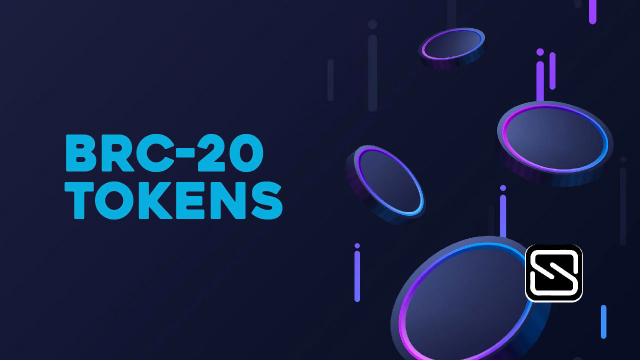Understanding BRC-20 Tokens: Exploring Bitcoin’s Native Token Standard
The BRC-20 token standard, launched in March 2023, enables the creation and transfer of fungible tokens on the Bitcoin blockchain. Similar to ERC-20 tokens, BRC-20 tokens offer potential for growth and profitability, despite their current limitations. This article explores their key features and impact on the cryptocurrency world.
By Staff
Introduction
BRC-20 tokens, the latest cryptocurrency trend, have garnered significant attention from investors and traders. These tokens are built on the Bitcoin blockchain, which has traditionally been seen as a store of value. With BRC-20 tokens, users can mint their own tokens and foster communities around them, opening doors to substantial growth and profitability. Despite associated technical risks, their popularity continues to soar. This article delves deeper into BRC-20 tokens, highlighting their key features, distinctions from other tokens, and the potential impact they may have on the cryptocurrency world.
BRC-20 Tokens and Bitcoin’s Evolution
Introduced in March 2023 by an anonymous developer known as Domo, BRC-20 (Bitcoin Request for Comment 20) is inspired by Ethereum’s ERC-20 protocol (Ethereum Request for Comment 20). BRC-20 tokens serve as Bitcoin’s counterpart to ERC-20 tokens.
ERC-20, an Ethereum token standard, empowers developers to create tokens compatible with the broader Ethereum network, featuring built-in smart contracts. These tokens can represent a wide range of transferable assets or rights, including ownership interests, access rights, or even different cryptocurrencies. Examples of ERC-20 tokens include Tether and Shibu Inu coin.
Bitcoin’s November 2021 Taproot upgrade paved the way for BRC-20 tokens by enabling ordinal inscriptions. Ordinals inscribe a serial number onto a satoshi, the smallest unit of bitcoin. This serial number, along with the ordinal data, is inserted into the witness signature field of a Bitcoin transaction, verifying legitimate ownership and preventing double-spending.
Although ordinals facilitate BRC-20 tokens, not all ordinals are BRC-20 tokens. This explains the vast number of ordinals compared to the approximately 14,000 BRC-20 tokens available.
Functionality and Distinctions
BRC-20 tokens utilize JSON (JavaScript Object Notation) ordinal inscriptions to initiate token contracts. However, the current BRC-20 protocol has limited functionality compared to ERC-20. Presently, users can only mint, deploy, and transfer tokens. It is important to note that BRC-20 is not an approved standard and remains in the proposal phase. Unlike ERC-20 tokens, BRC-20 tokens are not easily tradable on exchanges at this time.
Limitations of BRC-20 Tokens
While BRC-20 tokens are considered fungible, they can be more accurately described as semi-fungible since they can only be exchanged in specific increments.
To mint BRC-20 tokens, users need to create a mint JSON NFT (Non-Fungible Token) specifying the desired amount and then participate in a priority gas auction to finalize the minting process. When exchanging BRC-20 tokens natively on Bitcoin, sellers must create transfer NFTs to break up the original mint NFT into smaller portions, allowing for predefined batches of token sales. Similarly, buyers seeking a specific amount of BRC-20 tokens must find sellers offering the exact quantity they wish to purchase.
Furthermore, to determine the BRC-20 token balance of a wallet, users must rely on an off-chain indexer running the ruleset that interprets the inscriptions. Simply having a Bitcoin full node is insufficient for this purpose.
Domo, the creator of BRC-20, considers this token standard an experimental demonstration of creating off-chain balance states with inscriptions. It should not be regarded as the definitive fungibility standard for Bitcoin with ordinals, as Domo believes there are likely better design choices and optimization improvements to be explored.
The Future of Tokens on Bitcoin
While previous attempts, such as Colored Coins, and recent explorations like Taro, have aimed to represent assets on Bitcoin, BRC-20 tokens provide a novel approach to creating semi-fungible tokens natively on the Bitcoin network.
Although even the creator of BRC-20 expresses uncertainty regarding its long-term viability as a token standard, the open-source developer community may embrace this concept, evolving it further, and pushing the boundaries of what is achievable with Bitcoin’s scripting capabilities.
